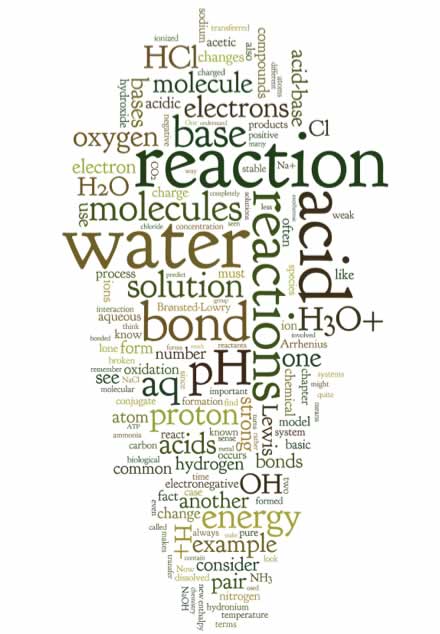Knowledge Statements
- A chemical reaction involves the production of new chemical species, in general this involves a reorganization of the valence electrons into new configurations (bonds)
- A phase change does not involve bond breaking, but rather changes in intermolecule interactions. The identify of the substance is conserved.
- Many chemical reactions can be placed in common classes (such as redox, acid-base, and nucleophile / electrophile reactions); these can be understood in terms of the organization of valence electrons of the atoms and molecules involved.
- We use different models to describe acid-base reactions, each more general than the previous. The Bronsted-Lowry model is often used for reactions in which protons are transferred in aqueous solution. The Lewis acid-base model is more general.
- Energy changes in reactions can be understood (in part) in terms of the energies involved in bond breaking and bond formation.
- A full understanding of a reaction requires a consideration of entropic factors as well.
